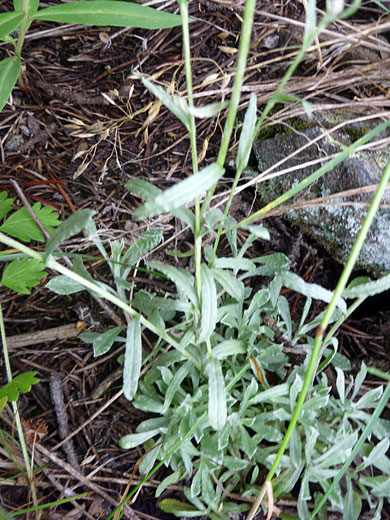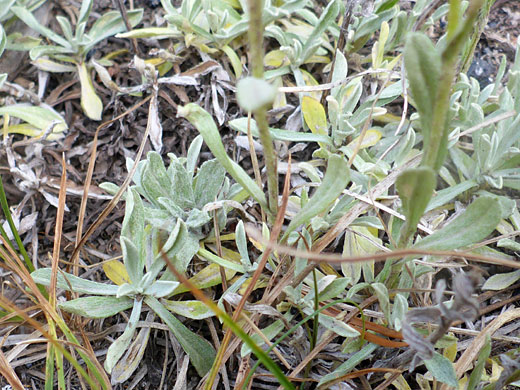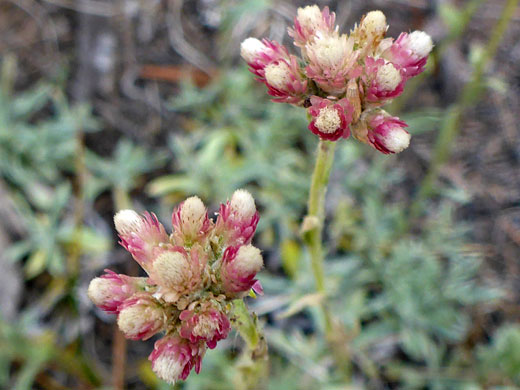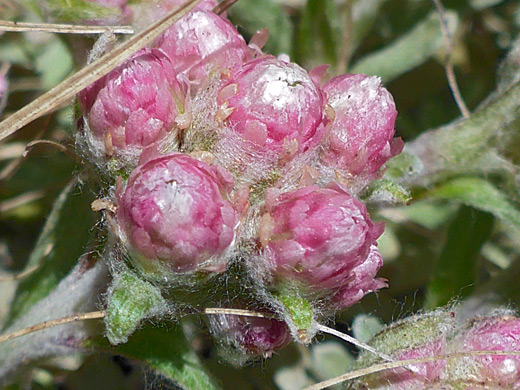Common name:
Rosy pussytoes
Family:
Scientific name:
Antennaria rosea
Main flower color:
Range:
Parts of all the western states
Height:
Up to 12 inches
Habitat:
Varied; fields, woodland, roadsides, mountain slopes, tundra; up to 12,500 feet
Leaves:
Spatulate or oblanceolate, up to 1.5 inches long, with one vein and a pointed tip
Season:
June to August
Rosy pussytoes, antennaria rosea, is distinguished from other species by the phyllaries surrounding the central disc florets, which are usually bright pink in color, though can also be brownish, yellow or white. It is the most wide ranging member of this genus in the US, found in varied habits from around sea level to the Alpine zone at over 12,000 feet. The plant produces clusters of between 3 and 30 flower heads which, like all antennaria species contain disc florets with either pistils or stamens (male or female, the latter more common).
The grey-green leaves have a coating of fine hairs, and vary in shape; those at the base are usually spatulate while those up the stem (alternately arranged) are linear. Four varieties of this species are recognized (rosea, confinis, arida, pulvinata), differing in leaf dimensions, phyllary color and other characteristics, and all are widespread
The grey-green leaves have a coating of fine hairs, and vary in shape; those at the base are usually spatulate while those up the stem (alternately arranged) are linear. Four varieties of this species are recognized (rosea, confinis, arida, pulvinata), differing in leaf dimensions, phyllary color and other characteristics, and all are widespread
All Contents © Copyright The American Southwest | Comments and Questions | Contribute | Site Map








